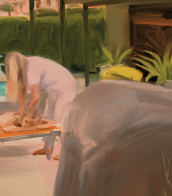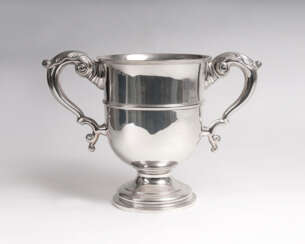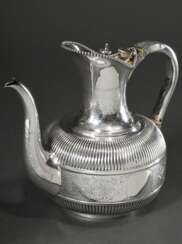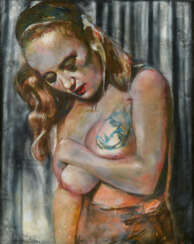martin hall

Martin Kippenberger was a German artist known for his extremely prolific output in a wide range of styles and media, superfiction as well as his provocative, jocular and hard-drinking public persona.
Kippenberger was "widely regarded as one of the most talented German artists of his generation," according to Roberta Smith of the New York Times. He was at the center of a generation of German enfants terribles including Albert Oehlen, Markus Oehlen, Werner Büttner, Georg Herold, Dieter Göls, and Günther Förg.


Martin Kippenberger was a German artist known for his extremely prolific output in a wide range of styles and media, superfiction as well as his provocative, jocular and hard-drinking public persona.
Kippenberger was "widely regarded as one of the most talented German artists of his generation," according to Roberta Smith of the New York Times. He was at the center of a generation of German enfants terribles including Albert Oehlen, Markus Oehlen, Werner Büttner, Georg Herold, Dieter Göls, and Günther Förg.


Martin Eder is a German artist.
From 1986 until 1992, he studied at the Augsburg University of Applied Sciences, and from 1993 until 1995 continued his studies at the Academy of Fine Arts Nuremberg, attending the University of Kassel in 1995 and 1996. From 1996 until 1999 he studied under Eberhard Bosslet at the Dresden Academy of Fine Arts and was a master student under Professor Bosslet from 1991 until 2001. Eder lives and works in Berlin. He plays in his own experimental rock band under the name Richard Ruin et Les Demoniaques.


Martin Eder is a German artist.
From 1986 until 1992, he studied at the Augsburg University of Applied Sciences, and from 1993 until 1995 continued his studies at the Academy of Fine Arts Nuremberg, attending the University of Kassel in 1995 and 1996. From 1996 until 1999 he studied under Eberhard Bosslet at the Dresden Academy of Fine Arts and was a master student under Professor Bosslet from 1991 until 2001. Eder lives and works in Berlin. He plays in his own experimental rock band under the name Richard Ruin et Les Demoniaques.


Martin Kippenberger was a German artist known for his extremely prolific output in a wide range of styles and media, superfiction as well as his provocative, jocular and hard-drinking public persona.
Kippenberger was "widely regarded as one of the most talented German artists of his generation," according to Roberta Smith of the New York Times. He was at the center of a generation of German enfants terribles including Albert Oehlen, Markus Oehlen, Werner Büttner, Georg Herold, Dieter Göls, and Günther Förg.


Martin Kippenberger was a German artist known for his extremely prolific output in a wide range of styles and media, superfiction as well as his provocative, jocular and hard-drinking public persona.
Kippenberger was "widely regarded as one of the most talented German artists of his generation," according to Roberta Smith of the New York Times. He was at the center of a generation of German enfants terribles including Albert Oehlen, Markus Oehlen, Werner Büttner, Georg Herold, Dieter Göls, and Günther Förg.


Martin Disler was a Swiss painter, draughtsman and writer. He is associated with the Neue Wilde painting style.


Martin Kippenberger was a German artist known for his extremely prolific output in a wide range of styles and media, superfiction as well as his provocative, jocular and hard-drinking public persona.
Kippenberger was "widely regarded as one of the most talented German artists of his generation," according to Roberta Smith of the New York Times. He was at the center of a generation of German enfants terribles including Albert Oehlen, Markus Oehlen, Werner Büttner, Georg Herold, Dieter Göls, and Günther Förg.


Martin Disler was a Swiss painter, draughtsman and writer. He is associated with the Neue Wilde painting style.


Martin Disler was a Swiss painter, draughtsman and writer. He is associated with the Neue Wilde painting style.


Martin Kippenberger was a German artist known for his extremely prolific output in a wide range of styles and media, superfiction as well as his provocative, jocular and hard-drinking public persona.
Kippenberger was "widely regarded as one of the most talented German artists of his generation," according to Roberta Smith of the New York Times. He was at the center of a generation of German enfants terribles including Albert Oehlen, Markus Oehlen, Werner Büttner, Georg Herold, Dieter Göls, and Günther Förg.






Brigitte Matschinsky-Denninghoff was a German artist who worked with her husband Martin. She is known for her monumental abstract sculptures.


Herman Melville was an American writer, poet, and sailor.
Melville's hardship-filled youth ended on a whaling ship. He returned from his adventures in the South Seas in October 1844, and wrote "Taipi" the following spring. The book was based on the events surrounding Melville's desertion from the whaling ship Acushnet in 1842 and subsequent adventures in the Marquesas Islands.
Melville wrote several other novels and short stories and many poems, but during his lifetime his works were little appreciated by his contemporaries. Only in the 1920s began to rethink Melville, and he was recognized as a classic of world literature. World fame Melville already in the 20th century brought irrational novel "Moby Dick".













































































